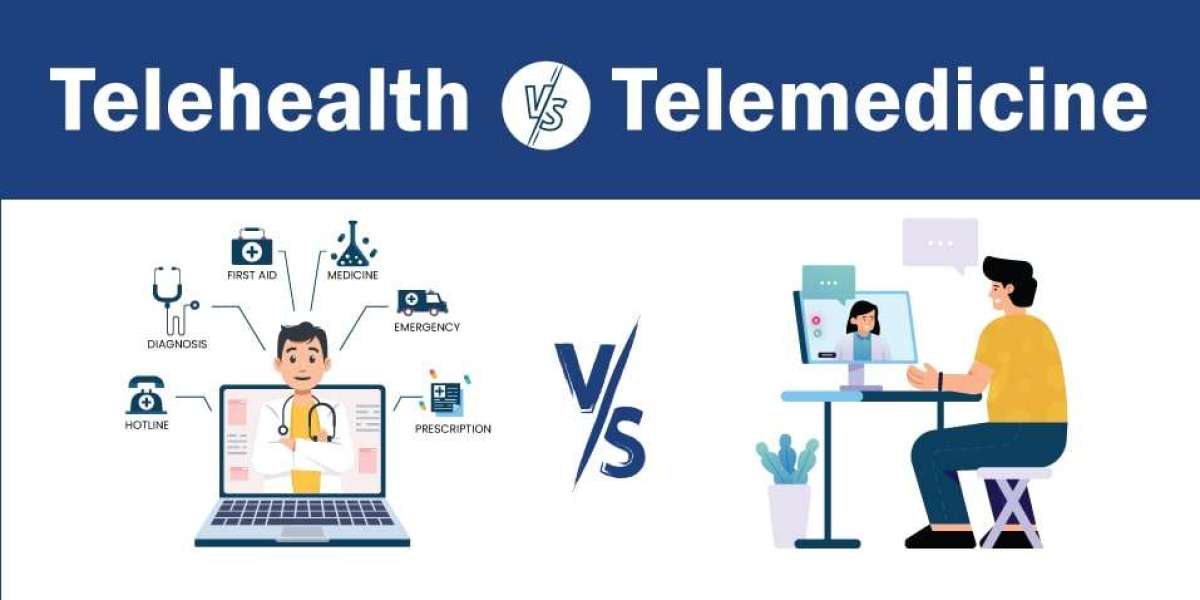In recent years, the healthcare landscape has undergone a profound transformation with the emergence of telehealth and telemedicine technologies. These innovative approaches to healthcare delivery leverage digital communication tools to connect patients with healthcare providers remotely, enabling access to medical care and services from the comfort of home. From virtual consultations to remote monitoring, telehealth and telemedicine are revolutionizing the way we receive healthcare services, improving access, convenience, and patient outcomes. Let's explore the evolution, benefits, challenges, and future of telehealth and telemedicine.
Evolution of Telehealth and Telemedicine:
The concept of telemedicine dates back several decades, with early experiments in remote healthcare delivery involving telephone consultations and video conferencing. However, it wasn't until the advent of digital technology and the internet that telehealth and telemedicine truly began to gain traction. Today, these terms encompass a broad spectrum of healthcare services delivered remotely, including:
- Teleconsultations: Virtual appointments between patients and healthcare providers via video conferencing or telephone.
- Remote Monitoring: Continuous monitoring of patient vital signs, symptoms, and health metrics using wearable devices and connected sensors.
- Telepsychiatry: Remote mental health consultations and therapy sessions delivered via video conferencing or secure messaging.
- Telestroke Services: Rapid assessment and treatment of stroke patients via telemedicine technology to improve outcomes and reduce disability.
- Remote Diagnostics: Remote interpretation of medical imaging tests, such as X-rays, MRIs, and CT scans, by specialists located elsewhere.
Benefits of Telehealth and Telemedicine:
Telehealth and telemedicine offer numerous benefits for patients, healthcare providers, and healthcare systems:
Improved Access: Telehealth eliminates geographic barriers to healthcare access, particularly in rural or underserved areas where medical facilities may be scarce or inaccessible.
Convenience: Telemedicine allows patients to receive medical care from the comfort of home, reducing the need for travel, time off work, and waiting room visits.
Cost Savings: Telehealth can lower healthcare costs by reducing hospital readmissions, emergency room visits, and unnecessary medical procedures, while also minimizing travel expenses for patients.
Enhanced Patient Engagement: Telemedicine encourages active patient participation in their healthcare, empowering them to take ownership of their health through remote monitoring, self-care tools, and educational resources.
Provider Flexibility: Telehealth enables healthcare providers to deliver care more efficiently, manage their time more effectively, and reach a larger patient population, improving overall workflow and productivity.
Continuity of Care: Telemedicine supports continuity of care by enabling seamless communication and collaboration among healthcare providers across different specialties and settings.
Challenges and Considerations:
While telehealth and telemedicine offer significant advantages, they also present challenges and considerations that must be addressed:
Technological Barriers: Limited access to high-speed internet, digital devices, and technology literacy may hinder adoption of telehealth services, particularly among elderly or underserved populations.
Regulatory and Reimbursement Issues: Regulatory frameworks and reimbursement policies vary by jurisdiction and insurance provider, creating complexities and barriers to widespread adoption of telemedicine.
Privacy and Security Concerns: Telehealth platforms must adhere to strict data protection regulations, ensuring the confidentiality, integrity, and security of patient health information during transmission and storage.
Quality of Care: While telemedicine can be effective for many healthcare services, certain medical conditions may require in-person evaluation, diagnosis, or treatment, raising questions about the quality and safety of remote care.
Digital Divide: Socioeconomic disparities in access to technology and healthcare resources may exacerbate existing inequalities in healthcare access and outcomes, underscoring the need for equitable telehealth solutions.
The Future of Telehealth and Telemedicine:
As technology continues to advance and healthcare delivery models evolve, the future of telehealth and telemedicine holds tremendous promise for transforming the way we receive and deliver healthcare services. Some key trends and developments to watch include:
Integration with Artificial Intelligence (AI): AI-powered telehealth solutions, such as chatbots, virtual assistants, and diagnostic algorithms, can enhance clinical decision-making, streamline workflows, and improve patient outcomes.
Expansion of Remote Monitoring: Remote patient monitoring technologies, including wearable devices, biosensors, and IoT-enabled health trackers, will play an increasingly important role in managing chronic conditions, detecting early warning signs, and promoting proactive health management.
Telehealth in Specialty Care: Telemedicine will continue to expand into specialty areas such as dermatology, cardiology, oncology, and neurology, enabling patients to access specialized expertise and treatment options regardless of geographic location.
Hybrid Care Models: Hybrid care models that combine in-person and virtual care modalities will become more prevalent, offering patients greater flexibility and choice in how they receive healthcare services.
Global Adoption: Telehealth and telemedicine will become increasingly globalized, with cross-border collaborations, telehealth tourism, and telemedicine outreach programs extending access to healthcare services to populations around the world.
In conclusion, telehealth and telemedicine represent a transformative shift in healthcare delivery, offering unprecedented opportunities to improve access, convenience, and quality of care for patients everywhere. By embracing innovation, overcoming challenges, and prioritizing patient-centered care, we can harness the full potential of telehealth and telemedicine to create a healthier, more equitable world for all.







